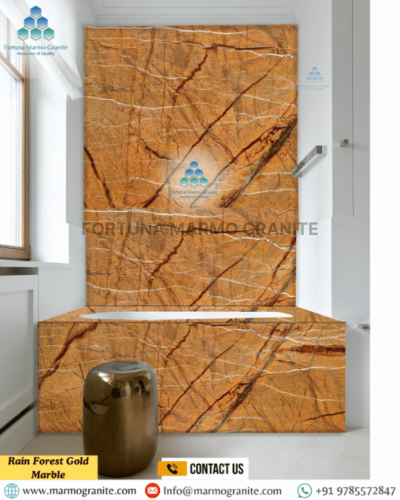How to Choose the Perfect Marble for Kitchens and Bathrooms
How to Choose the Perfect Marble Marble has inspired architects, artists, and homeowners for centuries with its natural beauty, rich history, and timeless appeal. From ancient temple columns to modern kitchen and bathroom surfaces, marble brings a sense of luxury and elegance to any space. Each marble slab is unique, with natural veining, colors, and patterns that make your design truly special. Choosing the right marble goes beyond looks—it involves matching your style, space needs, and technical factors.
Moreover, In kitchens, where spills, heat, and heavy use are common, you need dense and durable marble that can handle daily wear. Bathrooms benefit from marble that resists moisture and slips, creating a calm, spa-like feel. You also need to consider marble type, finish, thickness, and how it reflects light. Since marble is porous, it requires regular sealing and gentle cleaning. At Fortuna Marmo Granite, we guide you through every step, offering premium Indian and imported marble along with expert advice and reliable service.


The Allure and the Reality: Pros and Cons of Marble
The Pros:
Marble brings several valuable benefits that make it a top choice for kitchens, bathrooms, and more. It offers unmatched elegance—each slab is a unique piece of art with natural veining formed over thousands of years. This one-of-a-kind beauty adds a luxurious touch to any space. Marble also carries a rich history, seen in famous landmarks like the Taj Mahal and ancient Roman sculptures, giving your home a timeless, classic feel. In the kitchen, marble handles heat well, so you can place hot pots and pans directly on the surface without damage. Its naturally cool temperature makes it ideal for baking, as it helps keep dough firm and easy to work with. Many pastry chefs prefer marble for this reason.
The Cons:
- Marble offers beauty, but it also comes with a few challenges that homeowners should consider. Its surface is prone to etching because it contains calcium carbonate, which reacts with acidic liquids like lemon juice, vinegar, or wine. These spills leave dull marks that only polishing can remove. Marble is also porous, meaning it can absorb liquids and stain easily if spills aren't wiped up quickly. Common kitchen items like red wine, coffee, and oil can leave lasting marks. Scratching is another concern—marble is softer than granite or quartzite, so knives or heavy items can leave visible lines. To keep marble looking its best, you need to follow a regular maintenance routine, including using pH-neutral cleaners and sealing the surface once or twice a year.
A Tour of the World's Most Popular Marble Varieties
- Panda White Marble: Known for its dramatic black-and-white contrast, ideal for modern, minimalist kitchen countertops and feature walls.
- Green Onyx Marble: Offers a luxurious, translucent appeal perfect for bathroom vanities and accent panels, adding a spa-like ambiance.
- Jaisalmer Yellow Marble: With its warm golden hue, it brings a sunny, traditional charm to kitchen floors and bathroom tiles.
- Mercury Black Marble: Its deep black background with striking white veining is perfect for bold countertops and sleek vanity tops.
- Mont Bleu Marble: A sophisticated blend of blue-grey tones, ideal for contemporary bathroom flooring and walls.
- Morwar White Marble: This pure white stone with soft grey veins is a timeless choice for both kitchen islands and bathroom countertops.
- Nero Grafito Marble: A deep graphite black marble that creates a luxurious, high-contrast surface, perfect for statement kitchen backsplashes.
- Nizarna White Marble: Elegant and light-toned, it is perfect for creating a clean, airy feel in both small and large bathrooms.
- Persian White Marble: Features soft grey veining on a white base, offering a classic and refined look for any kitchen or bathroom surface.
- Plain Green Marble: A solid, natural green tone that adds a calm and earthy aesthetic, ideal for rustic kitchen counters or serene bathroom accents.
- Rainforest Brown Marble: With its tree-like veining, it's a bold and earthy choice, perfect for accent walls and vanity tops.
- Rainforest Gold Marble: A golden variation with rich, warm tones that adds a luxurious and exotic touch to kitchens and bathrooms alike.
Understanding Finishes: Polished vs. Honed vs. Leathered
The finish you choose for your marble slab greatly affects how it looks, feels, and performs over time. Each finish gives the stone a unique character and suits different spaces.
- A polished finish creates a shiny, mirror-like surface by buffing the marble. This glossy look brings out the stone's colors and veining, adding a luxurious touch. It's easy to clean but can show scratches and etch marks, so it's best for low-traffic areas like bathroom vanities or decorative spaces.
- A honed finish gives the marble a smooth, matte surface. This soft, non-reflective look works well in modern or minimalist designs. It doesn't show scratches as easily, making it perfect for busy spaces like kitchen countertops.
- A leathered finish adds a textured, slightly rough feel. Created by brushing a honed surface, it hides fingerprints and smudges well. It also adds grip, making it ideal for bathroom floors. Each finish brings its own blend of style, function, and durability.
The Selection Process: A Step-by-Step Guide
- See the Slab in Person: A small sample of marble can never do justice to the scale and beauty of a full slab. The veining pattern, color variation, and overall flow are impossible to appreciate without seeing the entire piece. Visit a stone supplier or a stone yard to view the slabs in person.
- Define Your Budget: Marble pricing is determined by rarity, demand, and origin. Be open with your supplier about your budget so they can guide you toward suitable options. Remember to factor in the costs of fabrication and professional installation, which are essential for a perfect result.
- Inspect for Flaws: While in the stone yard, closely examine the slabs. Look for any visible cracks or fissures. A fissure is a natural hairline separation in the stone that can add character, but a true crack is a structural flaw that could compromise the slab's integrity. A knowledgeable professional can help you distinguish between the two.
- Consider Your Layout: Think about how the veining will flow across your countertops, especially if you have a large kitchen island or multiple pieces that need to be "book-matched" (where two adjacent slabs mirror each other). Your fabricator can create a digital template to show you how the pattern will be laid out before they cut the stone.
Essential Maintenance Tips
Living with marble is about appreciating its evolution. The stone will develop a unique "patina" over time, a subtle change that tells the story of your home. Embracing this character is part of the experience. To keep your marble looking its best, follow these key maintenance tips:
- Seal, Seal, Seal: Apply a high-quality sealant immediately after installation. A sealed surface will give you a precious few moments to wipe up spills before they penetrate the stone. Consult your stone professional for the best sealant and a maintenance schedule.
- Clean with Care: Only use cleaning products specifically designed for natural stone or a mild, pH-neutral soap. Avoid all acidic cleaners, including vinegar, ammonia-based sprays, and abrasive scouring powders.
- Wipe Up Spills Immediately: Don't let liquids linger on your marble. Clean up spills from food, wine, or cleaning products as soon as they happen.
- Use Cutting Boards and Trivets: Protect your marble from scratches by always using a cutting board, and prevent thermal shock by placing hot pots and pans on trivets.
Conclusion
In conclusion, Choosing the perfect marble for kitchens and bathrooms is more than a design decision—it's an investment in beauty, durability, and long-term functionality. These spaces are among the most frequently used in any home. They demand a careful balance between aesthetics and practical performance.
Marble has long been a favorite for homeowners and designers due to its natural elegance, timeless charm, and luxurious patterns. However, selecting the right type requires more than choosing a beautiful slab. How to Choose the Perfect Marble: Understanding the qualities of different marble varieties is key. Consider factors such as porosity, hardness, stain resistance, and maintenance needs.

